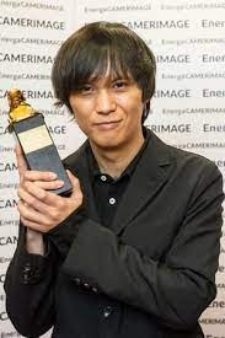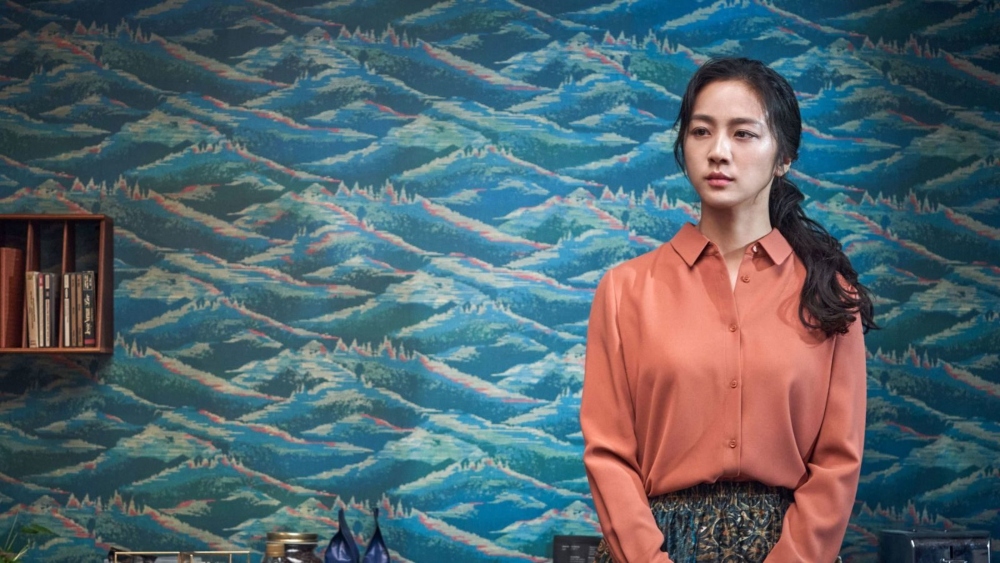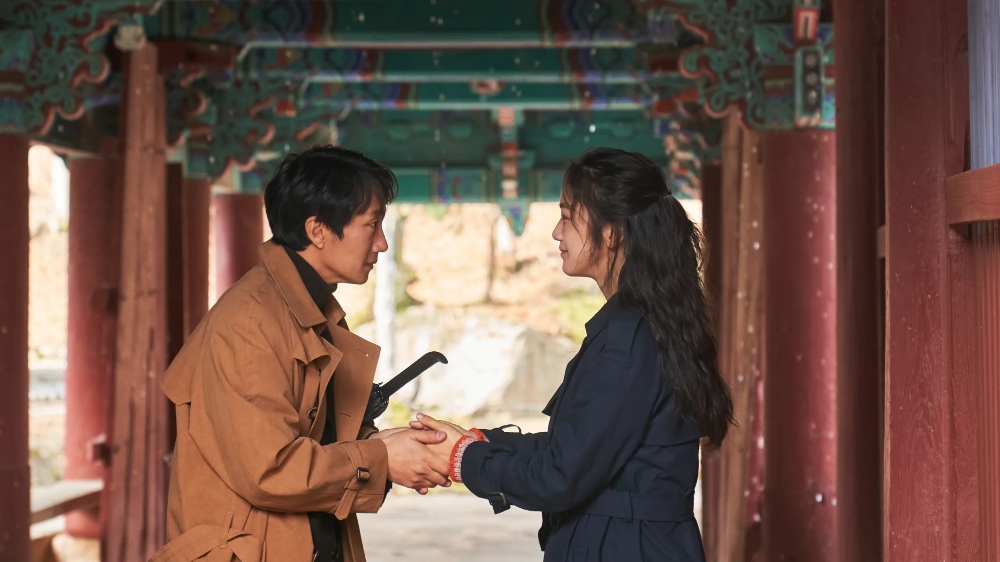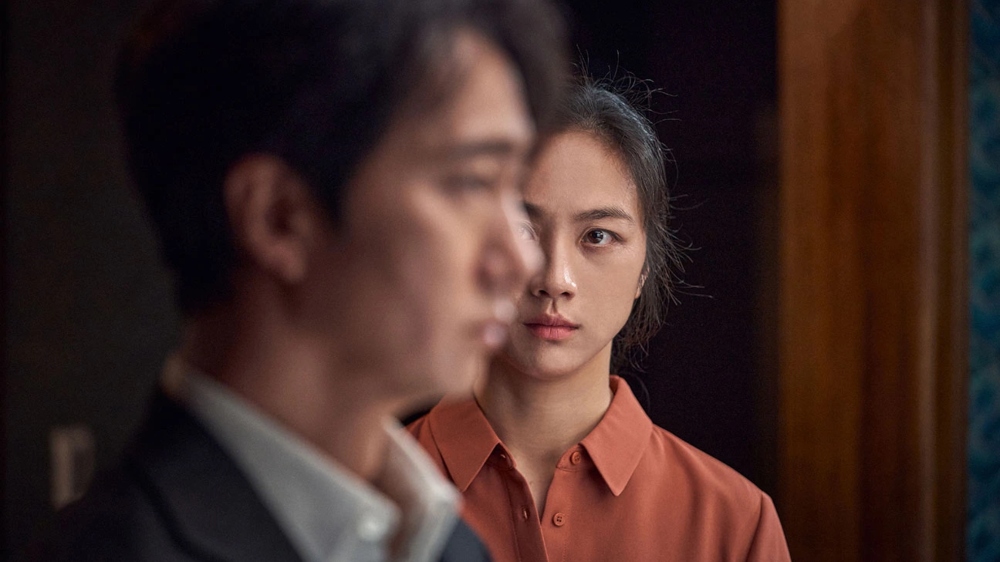Park Chan-wook‘s romantic noir Decision to Leave is one of this year’s most intriguing films — an old-school detective mystery with a seasoned policeman (Hae il Park) and an alluring femme fatale (Tang Wei). The twist-filled Korean film works so well due in part to the impressive efforts of Cinematographer Kim Ji-yong, marking his first time working with the legendary Park, whose latest film is South Korea’s official entry in the international feature race at this year’s OScars.
Below the Line recently spoke with the Los Angeles-based Kim, who shared his reflections on the film and how he managed to get some of its most ambitious shots, such as how he introduced a helpful lighting technique into the story when Park was struggling to find a way to achieve what he wanted.
Kim also discussed his experience working with Squid Game creator Hwang Dong-hyuk on previous projects and his own somewhat controversial credit on the Oscar-winning Parasite, and he also reflected on how much bigger Korean cinema has become in the U.S. in recent years.

Below the Line: Decision to Leave is your first collaboration with Park Chan-wook. What was your impression of him prior to this film?
Kim Ji-yong: I have been a big fan of his films. I’m also a big fan of Decision to Leave, even though I shot it. His movies are all awesome. Since the Korean film industry is not so big — not as big as Hollywood — even though we hadn’t worked together, we’ve known each other for a long time. He liked my work, and I was a big fan of his work, even before I became a DP. So when he called me, I was happy. I couldn’t find any good reason to say “no” to this film.
BTL: Did you have an expectation of what the film might be like from having seen his previous work?
Kim: Well, actually, I said I would work with him even before I read the script. So I didn’t have any expectations and I didn’t really know the story at all.
BTL: This is a very visually stunning film, and you have to pay close attention to every scene, as there are clues laced throughout. Did you see that as a challenge or an opportunity?
Kim: Well, it’s the same thing. A challenge and an opportunity! What I liked about this film was when we sat together with the director, he mentioned a lot about how he saw this film. He wanted it to look like an old-fashioned, classic film. But we can’t really make an old-fashioned, classic film anymore, so I tried to find good aspects, good things we liked about old classic Hollywood films. And not necessarily just Hollywood films, but all classic films. He asked me to watch [Michelangelo] Antonioni’s films. We didn’t specifically have any one reference. He wanted all the classic films we liked back in the day as a reference.
BTL: There are also some scenes where we see the two main characters talking and they’re separate, and then we see them in those same scenes as if they’re actually there. Did you shoot those kinds of scenes back-to-back or completely separately?
Kim: You can’t shoot a film back-to-back. It’s all editorial. We shot it with one of the shots on Day 3, one of the shots on Day 15. It’s all mixed up. But it was well-planned. We spent two months with the storyboard together.

BTL: Was there any particular technology in terms of lenses or cameras that was needed to achieve the look and feel you wanted?
Kim: From a technical point of view, it was pretty straightforward. No special lens, no special cameras. Was there any scene you felt was technically new or anything?
BTL: The two scenes that really stood out to me were set in the snowy mountains and on the beach. I don’t want to go into specifics in case readers haven’t seen the film yet, but those two were pretty mesmerizing.
Kim: Those two scenes were really hard to find the right location for. We don’t really have beaches like that in Korea. We found three different beaches and just shot the parts we liked about each and then combined them together. It combined well because of the fog. We put VFX fog all the way through so it could be blended together. We only had two days to shoot because [of] the time of day needed to have sun right over the horizon, and high tide had to be coming in. We only had two days, and if we missed it, we had to wait another two and a half months for the same situation.
We also couldn’t really bring any electricity down to the beach. There are regulations. I had to shoot all the scenes just with natural daylight. To achieve the shots that I liked, the Assistant Director and I had to schedule everything carefully, and, of course, we couldn’t shoot in order because we had to shoot all day and the sun is all over the place. But we had to make it look like the whole thing was happening over two hours in the late afternoon. It was hard but we were able to manage it.
BTL: I’m very impressed — are you happy with how it turned out?
Kim: Yeah, I’m happy. I really have to thank the VFX department because we had such a long time to make fog that everyone was happy with. Everyone had a different idea about the fog. It took us a long time for everyone to finally be happy with the fog. The snowy mountain was another challenge for me. It was really a mountain, and we had to be on top of the cliff and I had to light it. But we couldn’t really bring big cranes to light up the mountain, so when we made the storyboard together with Park Chan-wook, we came up with this idea of having Seo-rae (Tang Wei) with this lantern on her head and Hae-joon (Hae il Park) has lanterns in his car because he’s a cop and he has everything, [so] we could justify that.
Seo-rae looked very cute with her hand lantern, so we were happy and we could use it as our main key light. That scene was quite naturalistic. Most of the mountain is lit by the props. The thing is, it is very naturalistic, but it doesn’t look like other films. In that way, it’s more unrealistic. It is very realistic to be non-realistic. That was my plan, and I like what I got.

BTL: There are also some really great chase scenes. Were those difficult to film?
Kim: There is one technical gimmick. We put body mounts on one suspect and two detectives. Three of those guys, our actors, had to run with a heavy camera for a long distance. It came out really good. I like that scene, where we start from the light ground and just keep going up. At the end, we can see the whole city view. We wanted to show the city that they’re living in.
BTL: You’ve worked with Hwang Dong-hyuk a few times. What is it like to see Squid Game just take off and have this international success?
Kim: I was very happy about it. We actually spoke this morning. He’s in Korea right now writing the second season of Squid Game. I was so happy and I went to his celebration party after the Emmys to congratulate him. Have you seen the film he and I made together, The Fortress? You should watch it. It’s on Netflix, and it’s a very good film. And Squid Game is quite different from his previous films. I’m very happy for him.
BTL: I saw that you also worked as a camera operator on Parasite. Is that right?
Kim: That is wrong information! [laughs] I know the producer of Okja, his previous film, very well. I went there to help out, just for a few days, maybe five or six days. I’m a big fan of Darius Khondji, and I was in between jobs, so I just went there to watch him work and help out. That’s it. I don’t know how my name got in the [Parasite]credits.

BTL: What is it like seeing South Korean cinema and television thrust into the international spotlight right now?
Kim: I’m starting an HBO show with Park Chan-wook right now called The Sympathizer. I went to film school here 20 years ago at AFI. Back then, people came up and asked me [about it because] they didn’t really know anything about Korean film and pop culture. Now, everyone knows K-Pop singers. Everyone knows Parasite and Squid Game, and hopefully, soon they will know Decision to Leave. It is quite different, and people like to see more Korean films and TV shows. They are already big fans and they are ready to be [even] bigger fans.
BTL: What are some other films and TV shows you would recommend to people who want to get more into Korean cinema?
Kim: There are so many good directors. They are really famous. Bong Joon-ho, Park Chan-wook, Kim Jee-woon. Check out I Saw the Devil and A Bittersweet Life, which I shot. And, again, The Fortress is on Netflix. There are so many.
BTL: Besides The Sympathizer, is there anything else you’re working on at the moment, or prepping to work on?
Kim: We started on Sympathizer [in] November and [it] goes until May. After that, I’m not sure, I don’t know.
BTL: Is there anything you can tell us about that show?
Kim: I’m not sure what I can say. It’s based on a famous Pulitzer Prize-winning novel. Robert Downey Jr. is in it and many other new actors and actresses from Vietnam.
Decision to Leave is currently streaming on MUBI and available to buy or rent on all major digital/VOD platforms.





